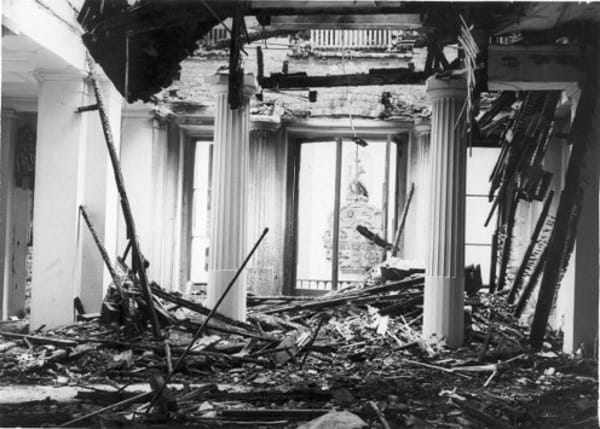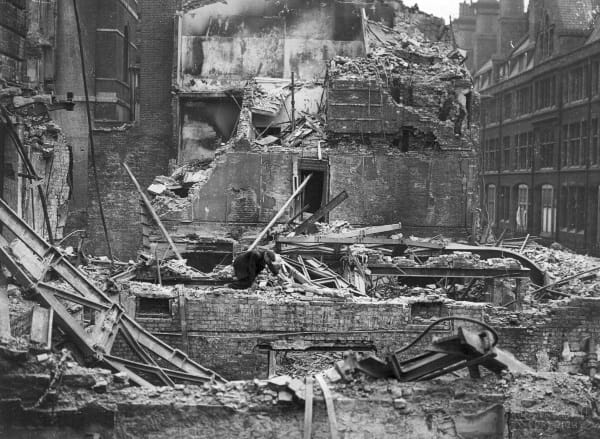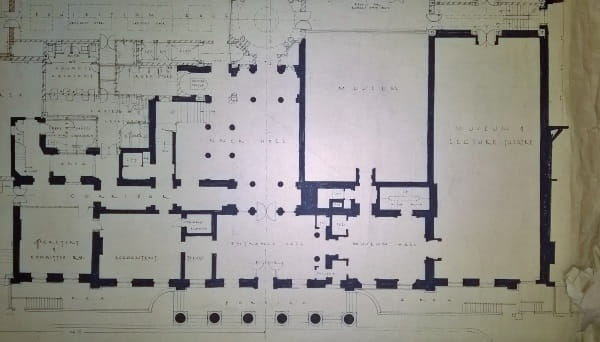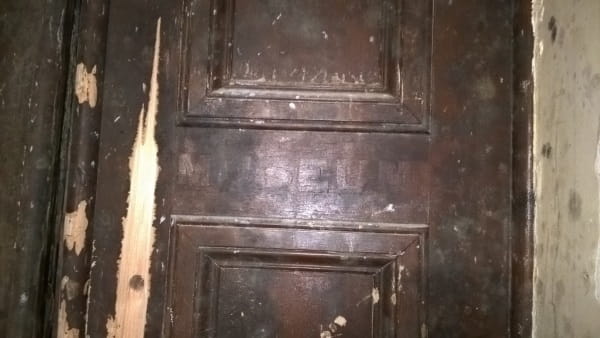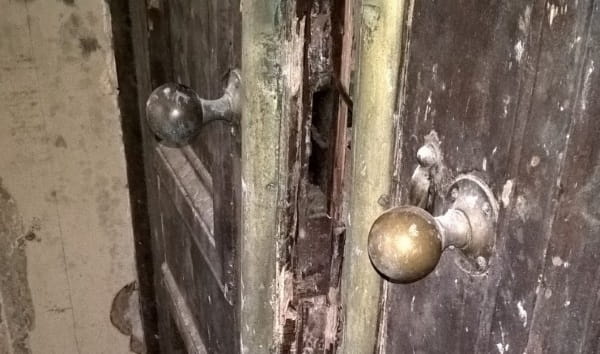A door to the past
17 Jun 2019
Susan Isaac
The Company of Surgeons moved to Lincoln’s Inn Fields in 1797, and quickly commissioned its first building, but how organisations use buildings changes over time. Sometimes the changes are made to meet new requirements, but occasionally change comes from disaster.
On 11 May 1941, during World War II, the College was hit by incendiary devices starting a major fire that caused severe damage to the building. The front of Sir Charles Barry’s building survived thanks to the strength of the two sets of cast iron fire doors leading into the Library, but the Hunterian Museum on the ground floor was very badly damaged, with some of the Hunterian Collection lost in the fire.
The College was rebuilt after the end of the war and the new building took a different form, with more space given over to research. During current work to renovate the front of the Barry building, we have rediscovered one of the original features of the building, which was hidden when it was repaired in the 1950s.
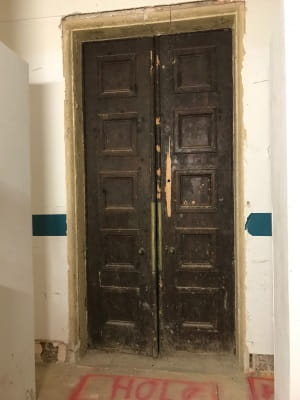
The renovation work has not only uncovered these earlier doorways, but to our surprise, the original doors with their furnishings are still in place. The first door was found in 2018 behind the Lister plaque in the Entrance Hall and was probably the original entry to the College Secretary’s office. Recently the matching door on the opposite side of the Entrance Hall was uncovered. This is the door to the Museum Hall and despite the obvious damage from the war time air raid, it still has the original sign, “Museum Hall”, written in oil paint. It is likely that the doors were designed by Sir Charles Barry when the building was designed and built in 1834.
The recessed doorways were tall with double panelled doors which still look impressive, if rather battered. When the building was repaired and rebuilt in the 1950s, the architrave and skirting boards were removed, and the space on either side of the doors bricked up. The walls were then plastered, hiding the doorways and changing the function of the Entrance Hall.
We can speculate why the doors where left in situ. As the doorways are recessed, both sides of the doorway needed to be bricked up. It would have required some effort to remove the doors and then dispose of them, so it would have saved the workmen time to just close the doors and fill in the recess. The depth of the recess allowed enough space behind the bricks that there was no need to remove the door knobs either. Alternatively, they may have been kept as they are a part of the building’s history, or as a result of war time thrift, someone thought that if the doorways were ever reopened, the doors would be required again.
Discussions on what to do with this humble piece of College history are underway. Should at least one of the doors be refurbished, glazed and retained to show this original building feature, or should they be recorded and protected, but bricked up again? There is a balance that needs to be struck between the history of a building and its current purpose and function which isn’t always easy to find.
See our earlier blog posts about the Library to find out what else we have discovered during the redevelopment, or how the Library was evacuated in World War II.
Susan Isaac, Information Services Manager

